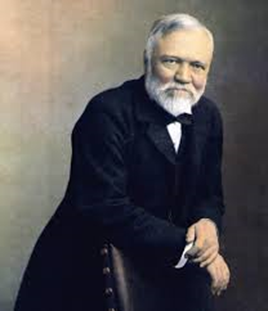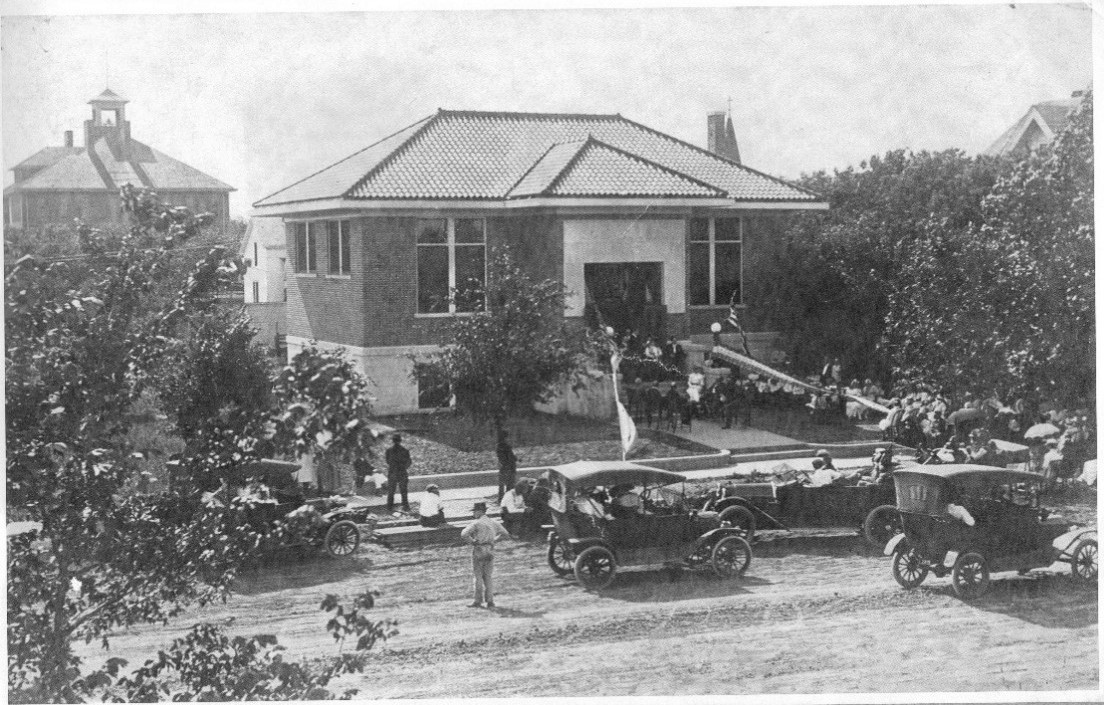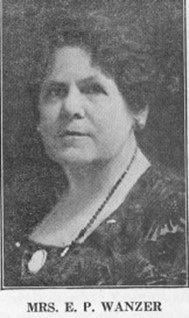Library Hours:
Monday, Tuesday, Thursday and Friday 2 p.m. to 6 p.m.
Wednesday and Saturday 10 a.m. to 2 p.m.
Armour Carnegie Library Internet Use Policy
Library History
Prior to the existing building for our library, the State had provided a Travelling Library to provide free books for individuals to read and then return the books the next time the Library returned to their town. It also helped to accumulate books and establish a city library if it would be feasible for the town. There seemed to be some sort of state monetary support for the accumulation of books, as we have copies of letters Lulu Wanzer wrote requesting the state to increase appropriations.
During this time there were bake sales and socials held to raise money to purchase books that were in a building located on the property where the Rocket Printing building currently exists. These scarce books and magazines were available for readers. Later the books were relocated to the back of the Crutchett Drug Store where the Sewing Center building is currently housed.
Andrew Carnegie had built his empire in the steel industry and decided to use his fortune to create a legacy by building libraries. Starting in 1883 the first ones were where he had ties, such as in Scotland and Pittsburgh. Then he hired an individual to set up an application process for communities to apply for grants to build their library.
Meanwhile, here in Armour, there was a community minded individual named Lulu Wanzer that was determined to get this Carnegie grant. We have numerous letters that create a history of the correspondence sent between Carnegie and her, as well as those between her and the architect and contractor. She was a determined lady that was not easily persuaded to change her mind.
In 1910, Lulu had requested a motion to the City Council to pose a question to the voters “Shall a Public Library and Reading Room be established and maintained in the City of Armour?”. The voters were in favor of this, so Lulu started her mission to find funding etc., for the library. A letter was sent to Carnegie for procedures to acquire one through his grant.
Carnegie had rules that required the application be submitted and signed by the Mayor and Council. An annual funding in perpetuity for the library in the amount of 10% of the grant will have to be promised, and a Library Board will have to be established. There were several points Lulu didn’t agree with, and one was the architectural plans Carnegie required, and after several go-arounds by letter, on February 26, 1914, Carnegie agrees, but (as it here is actually written by Carnegie’s employee), “the building the planz call for will be erected complete and ready to occupy within $7,500 promist, and that therefore further funds will not be cald for from this Corporation.” So, Lulu had her way, and the rest was history. The building was dedicated on June 25, 1915.
Mrs. Minnie Raben was the first Librarian appointed at a salary of $30 per month. Miss Margaret Mead was assistant, and the first janitor was Roy Raben with a salary of $10 per month. During World War I, the basement room was used by the Red Cross ladies who repaired/knitted clothing and rolled bandages for the soldiers.
Carnegie’s last grant was in 1919, and during all that time, 2,509 were built throughout the world, and of those, 1,689 were in the United States. $40 million was spent on those libraries located in 1,412 American communities.
A central main circulation desk was included in the building plans for the library. This was because of possible thefts since books were so scarce. That desk is still currently in use in the same spot as designated. Closed book stacks were the norm at that time, which required the Librarian, or an assistant, search for the requested book by the patron, and deliver it personally for checking out (thus preventing thefts). Later they implemented the open stack policy where the patron could browse the books and check them out.
Several donations at the time of opening were made to the library. The Floete family donated the table and chairs still in use on the main floor, The Thimble Club donated the relief “Aurora Bringing Dawn across the Sky”, The Prairie Home Study donated the bust of “Apollo” and the picture “Sir Lancelot”, and there were many others not documented. Recently, an alumnus bequeathed a sum of money that was used to install new windows and front entrance, a new heat pump, and a lawyers bookcase to house the numerous books he donated as well.
Currently there are well over 13,000 books for readers, as well as video and audio books. The available books are all cataloged and searchable by the Librarian on our main computer. We have digitized editions of the Armour Chronicle, Armour Chronicle Tribune, Armour Herald, Corsica Globe, Delmont Record, Douglas County Chronicle, Harrison Globe, and Harrison-Corsica Globe. Editions as far back as 1884 can be found. The Armour Chronicle is the only one currently imaged annually. Also available through the library is a portal that you can use to download and read e-books on your devices.
It should be noted that Mrs. Lulu Swallow Wanzer was a remarkable lady. Here are some more noted accomplishments she is credited with:
Her efforts organized the Ladies Cemetery Association in Armour for the newly acquired ground to be used as a cemetery. It has now been reorganized as the Pleasant Ridge Cemetery Association. She founded the South Dakota Health Association in 1913 and was chosen its first president. During that year she organized the first Christmas Seal Sale in South Dakota and, with the proceeds, the first Public Health Nurse was employed, and then placed in Douglas County. In appreciation of her continued efforts and influence toward developing public health work in the State, Camp Wanzer, the South Dakota Tuberculosis Association’s summer preventorium in the Black Hills is named for her.
There have been many changes to our community since our library was built, but only with all our patrons support and the committed funding our City has provided, have we survived throughout this period. A sincere thank you is extended from all the previous and existing board members and Librarians, as well as all the volunteers.



